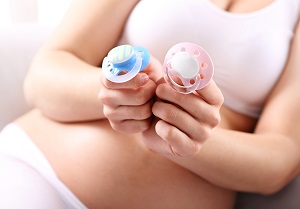An Australian mother gave birth to a pair of "almost identical" twins, born of an oocyte and two spermatozoa. This is the second case in the world, the first identified during pregnancy. The case, more unique than rare, was followed by Dr. Michael Gabbett of Queensland University of Technology in Australia.
According to the scientists, two spermatozoa fertilized the oocyte together, before it split up. At first, gestation seems a normal case of homozygous twins: fetuses share the same placenta. Yet at the 14th week it emerges that one child is male and the other is female: it is impossible for them to be homozygous. The identical twins, in fact, share the same DNA and therefore the same genus. When the two spermatozoa fertilized the oocyte, three sets of chromosomes were found.
Usually this event is incompatible with life and the embryos do not survive. In this case, however, the chromosomes split into two and gave rise to a pair of twins. All the cells contain the chromosomes of the mother, some contain those of the first spermatozoon and others those of the second. The twins therefore have a very similar but not identical DNA.
Source: theguardian.com
















